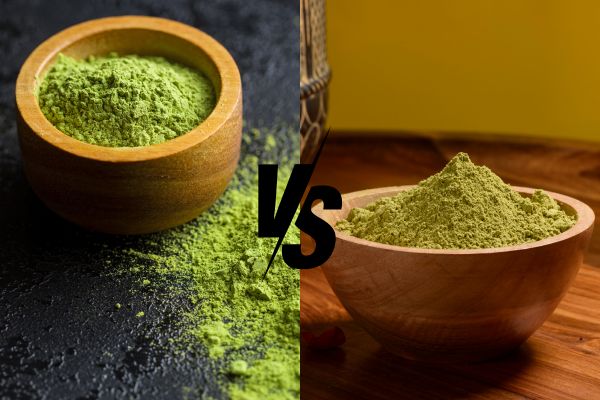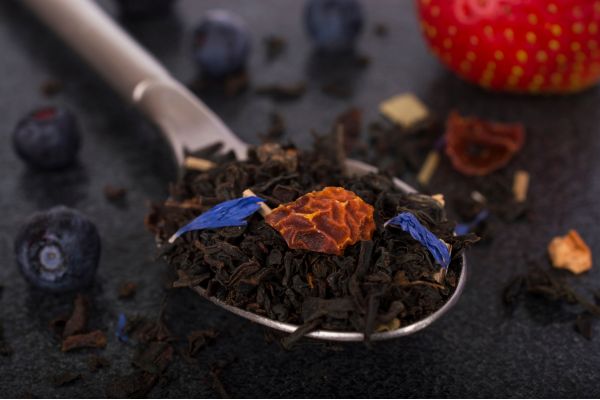Peruse a primer on essential knowledge for tea drinkers. From green and black to white and oolong, there’s a wide variety of tea types for Camellia sinensis lovers to sip and savor. Plenty of flavors are waiting to be discovered by every unique palate. Learn more about your favorites and discover a new one today!
Green Tea
Every harvested tea begins as green tea, the oldest of all tea families. The freshly plucked sets of two leaves and a bud are either pan-fired in woks or placed in large mechanical steamers, where a steam bath kills the enzymes and prohibits oxidation. The leaves are then flattened or rolled by hand or machine and dried. Since they are not heavily bruised and oxidized, the dry leaves retain their natural dark olive-green color and their vegetative aroma and taste.
Green tea is sought after for its health benefits. The buzzword among tea research scientists for the past decade has been EGCG (epigallocatechin gallate, an antioxidant polyphenol), green tea’s principle catechin, and a powerful antioxidant.
For centuries, Vietnam is one of the principal sources of green tea production. With the worldwide increase in demand, every major tea-growing country now produces green tea.
Best-Known Green Teas
Non-Tom Thai Nguyen Tea Non-Tom tea from Tan Cuong is a famous and high-grade product of Thai Nguyen, Vietnam. Instead of plucking the buds and two young leaves like the normal procedure, tea growers here only take the buds. For a better taste, the picking process must start from dawn until midday, which is the belief of the locals. Like other types of Vietnamese tea, Non-Tom is bitter when you have a gulp, but a sweet lasting flavor would follow and make people fall in love with it.
Shan Tuyet Tea Tay Bac Highlands in Vietnam include some provinces surrounding the mighty Hoang Lien Son mountain range. It is the Fatherland of many hundred-year-old tea trees that are only known and harvested by the indigenous minorities. The pure water flows from the mountains and becomes the natural irrigation system for the tea fields. Especially, Yen Bai province is well-known for Shan Tuyet (Snow of the mountain) tea. These tea leaves are coated with a layer of milky lanugo. Its smell is heavenly and its taste is persistently sweet, which gives it the title as “the Queen of Green tea” in Vietnam.
West Lake Lotus tea Like many other tea-producing regions, Vietnamese have discovered an exceptional method to make tea more aromatic: mix it with flower and herb! If internationally acclaimed Earl Grey or Chai have made their name known, Vietnam scented tea is very simple and yet unique, combining the flavor of mostly earthy and native plant. The tea buds and leaves will be kept in an earthen jar, covered with banana leaves, and stored for nearly two years to make the taste less bitter and increase the fragrant-absorbed ability of the tea leaves. In order to have one kilogram of Lotus tea, 800-1000 lotus flowers, which are picked before dawn are needed. Tea is mixed five to six consecutive times until all the tea leaves are thoroughly soaked up with the purely clean scent of lotus.
Lung Ching Originating in the Chinese town of Dragon Well, the best grade of Lung Ching (also spelled Longjing) is made of only the bud and one new leaf. It is not rolled but left in its natural pointed form. The clean, well-balanced aroma suggests freshly cut grass and roasted chestnuts.
Oolong Tea
Oolongs, with their full-bodied brews and fragrant aromas, have inspired the Chinese, Taiwanese and Vietnamese for centuries. These teas are partially oxidized and thus fall between the blacks and the greens in the four tea families. Oolongs, depending on their origin and the skills of the tea master, can be light and fragrant or deep and roasted. Fine oolongs are meant to be infused several times, with different flavor notes released during each steeping. Oolong teas generally should be consumed without the addition of milk, lemon, or sweetener.
Oolongs for Every Tea Lover’s Collection
Lamdong Oolong Tea Oolong tea is said to be a suitable choice for anyone who first tries drinking tea. The tea water is amber yellow to reddish-brown, and the aroma is fresh, fragrant, and flavorful. With suitable soils and a cool climate, Lam Dong of Vietnam is another ideal place to develop the tea-growing industry. The farmers here rarely use pesticides, and if they do, it has to go through strict surveillance.
Baozhong This classic Taiwanese oolong, exhibits characteristics of both green tea and oolongs. The long, twisted emerald leaves release a subtle yet intoxicating aroma reminiscent of the fragrance of lilacs and gardenias.
Tieguanyin The best known of Chinese balled oolongs, named for the goddess of mercy, is an aromatic and elegant tea manufactured in central Fujian province. The slightly twisted leaves unfurl in a mixture of red-brown and dark green colors and release a honey-colored liquor with a delicately sweet floral flavor.
Black Tea
The family of teas Western cultures consumes most is that of black tea, which can be offered as single-estate, blended, or flavored. Plucked green tea leaves are allowed to wither for 12 to 24 hours. These limp leaves are in the early stages of oxidation, the principal chemical reaction that determines tea families. After the withering process, rolling machines twist and bruise the leaves, releasing the leaves’ juices. The rolled leaves are allowed to oxidize, in the manner of compost, for up to 4 hours. To halt oxidation, the now black leaves are dried with hot air, usually in a drying machine. The finished tea is cleaned, sorted, and graded before packing. A well-stocked cupboard should include at least four classic, handpicked, unflavored black teas from the major growing regions of the world.
Black Teas from Major Growing Regions
Hagiang Orange Pekoe Many tea blenders offer tea called orange pekoe (OP). Orange pekoe is a grade of uniformly long, pointed tea leaves, well-twisted, brisk and aromatic liquor. Stimulating and full of character, the black tea selection is produced in the high mountains of northern Vietnam. Produced from the leaves of ancient, wild-grown tea trees using orthodox methods the teas have greater depth and complexity than many lower grown farm teas.
Assam This robust, malty tea is from the northeast Indian state of Assam, where more than 800 tea gardens are cultivated. It is often manufactured for drinking at breakfast and is suited to the addition of milk. Look for a mellow tippy grade to accompany afternoon tea meals.
Darjeeling A delicate, slightly green black tea, Darjeeling hails from the Himalayan foothills of India. Eighty-six gardens in the state of Darjeeling produce exceptional, and expensive, teas known for their distinctive muscatel overtones. The four-yearly pickings are First Flush, Second Flush, Rainy Teas, and Autumnal Flush. These delicate, light teas are best infused for no more than 4 minutes.
Golden Yunnan China’s Yunnan province has produced exceptional teas for more than 1,700 years. This gorgeous black tea displays big golden buds and uniformly shaped leaves that brew to a rich, dark reddish-black liquor that has a molasses-like sweetness and an earthy finish. Show the dry leaves to your guests for added appeal.
White Tea
First produced in 11th century China, this delicate and much-prized tea comes from young, unopened tea buds that are hand-plucked, withered to remove some moisture, and gently dried. The curled buds have a silvery-white appearance. Originally grown only in the Fujian mountains, white teas are now manufactured in other major tea-producing countries such as India, Kenya, Malawi, and Sri Lanka. The liquor is pale like Champagne. The flavor is soft and smooth, often with a hint of peach pit and the lingering sweetness of honey.
The growing popularity of white tea and the acknowledgment of its apparent health benefits have led to a proliferation of ready-to-drink white tea beverages. As well, the number of cosmetic products containing white tea as an ingredient has increased.
According to the different standards of picking and manufacturing, most white teas can be classified as either only bud or two leaves and a bud.
White Teas From Major Growing Regions
Bai Hao Yin Zhen Also called Silver Needle, this classic Chinese white tea consists only of stout buds covered with silvery hairs. The liquor is low in caffeine but high in healthy polyphenols. Silver Needle teas are very expensive but can be infused several times.
Darjeeling White Tea First produced in 2000 and available in limited quantities from several estates, these young spring teas resemble the Chinese Bai Mu Dan, but the taste is a bit deeper and nuttier than those productions.










